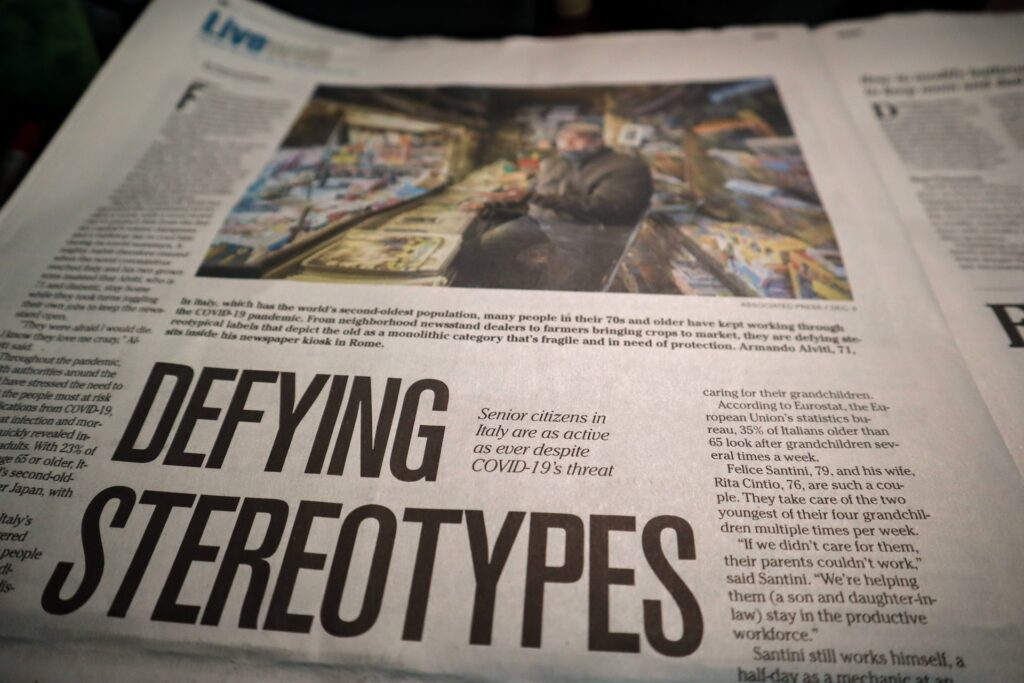Fake news isn’t a new occurrence, yet its swift diffusion in present times is indeed noteworthy. Most of us need assistance when discerning genuine news from false reports online. There is information overload, and many aren’t able to discern what to believe or discard, leading to widespread confusion in the online space.
More users are turning to social media for news and informational updates, and not all the content found on these platforms is trustworthy.
Disinformation is rooted in deceit, and it undermines reader trust. Hacking, bots, ideological biases, and content sharing are all commonly used to spread false information online. To develop a better understanding of how to recognize misinformation on social media effectively, please continue reading for ten invaluable ways to spread fake news on social media.
What exactly is fake news?
False or misleading material masquerading as authentic news is called fake news. Two categories of fake news that exist are:
- Deliberately erroneous stories, in which the people who publish them know they are false but continue to do so. It might be done to sway public opinion or draw site visitors to a specific page.
- Stories that have some aspects of truth yet are generally incorrect. This could be because the writer needed to double-check all of their information or exaggerated certain features to make a point.
Misinformation is not a new phenomenon; the term “fake news” was used in the nineteenth century, but the internet and social media have changed how it is manufactured and shared. People used to get their news from trusted media outlets whose journalists were obligated to follow stringent codes of conduct. With minimal oversight or editorial standards, the internet provided new avenues to create, share, and consume news and information.
People tend to accept what is shared as fact, mostly because anyone can now come forward and share anything they want and because many people now get their news from social media and other online sources. We must learn to clarify which reports are accurate and which are not.
Types of fake news
The motivation of those who make false news determines the nature of fake news. As an example:
- Poor-quality journalism
Some journalists scarcely have time to double-check their information before posting, making legitimate errors and spreading fake news. On the other hand, trusted news sources will correct faults in their reports and be open to readers when they make mistakes.
- Misleading headlines
A story may generally be genuine, but a sensational or misleading headline gets people to click on it. The rapid spread of fake news is facilitated because only the headline and brief sections of the content are usually shared on social media.
- Imposter content
When legitimate news outlets are impersonated with fraudulent, made-up stories to confuse or mislead audiences.
Sensationalism sells, and wild or strange news and distorted imagery get web clicks and shares. Clickbait refers to tales intentionally meant to increase website views and advertising revenue for website owners, frequently at the expense of truth and accuracy.
- Propaganda
This refers to untrue or manipulated stories to mislead viewers and promote a political agenda or biased viewpoint.
- Satire or parody
Specific individuals publish fake news for entertainment. Satirical stories, for instance, utilize humor, irony, or exaggeration to poke fun at current events or well-known figures. These stories, which are not intended to be taken seriously, do not have the intention of misleading audiences. The Onion and The Daily Mash are two renowned satirical websites.
How does fake news work?
Fake news websites actively propagate fake news, often mimicking legitimate news sources to establish credibility. Studies indicate that social media facilitates the rapid dissemination of false claims, surpassing the speed of accurate information. The rapid spread of fake news is driven by its intention to capture attention and evoke emotional responses, often featuring sensational claims or stories intended to incite anger or fear.
Social media feeds sometimes favor material based on engagement metrics—that is, how frequently it is shared and liked—rather than accuracy or thoroughness. This strategy can potentially distribute sensationalism, hyperbole, and misinformation extensively. Social media businesses are perceived as platforms rather than publishers, so they are not subjected to the same legal liabilities as conventional media sources. However, this dynamic could change as the political and legal landscape evolves.
Social media bots can propagate fake news since they mass produce and distribute content regardless of their sources’ authenticity. Bots can create bogus online profiles, gaining followers, recognition, and authority — some of which are programmed to spread falsehoods.
10 Ways to Spot Fake News on Social Media

The initial step in combating the dissemination of misinformation on social media is to detect and identify fake news. It’s always a good idea to double-check before sharing with others. Here are ten strategies for identifying phony information and disinformation.
1. Verify the information’s source
Do some research if this story comes from an unknown source. Examine the page’s web address for unusual domains other than “.com,” such as “infonet” or “.offer.” Check the URL address for any spelling problems in the company name.
Consider the source’s reputation and subject area competence. To distribute fake news, bad actors may construct websites that look like professional sites. When in doubt, go to the organization’s home page and look for the same information. Suppose you encounter a report that appears to originate from the Centers for Disease Control and Prevention (CDC). In that case, you should visit the CDC’s official and secure website to verify the information.
2. Check other reliable sources
Look for coverage of this subject on other respectable news sites and outlets. Examine the story’s citations for reputable sources. Credible, professional news organizations have rigid editorial criteria for fact-checking an item.
3. Look for the profile photo
Check the author’s profile picture in addition to their information and credibility. Perform a reverse image search for your profile photo on Google Reverse Image Search. Check that the image is not a stock photo or of a celebrity. If the photograph appears original, the article is likely trustworthy because it is anonymous.
4. Consider the author
Search for the author. Examine their credibility, their number of followers, and the length of time the account has been active.
Examine other posts to see whether they have bot habits, such as posting at all hours of the day and from all over the world. Look for characteristics such as a username with digits and strange links in the author’s bio. It is likely a false bot account if the content gets retweeted from other accounts and has a highly contentious political range.
5. Develop a critical mindset
Don’t let your convictions cloud your judgment. Biases can influence how people react to articles. Social media networks recommend news based on a user’s interests, opinions, and browsing behavior.
Don’t let your emotions cloud your judgment of the story. Examine a report critically and logically. If the story attempts to influence the reader or directs them to another website, it is most likely fake news.
6. Read beyond the headline
Consider whether the story is improbable or too fantastic to be true. A believable story contains information communicated through expert quotes, official figures, and survey data. It could also include eyewitness reports.
The information should be questioned if there are no comprehensive or consistent facts beyond the headline. Look for evidence that the event occurred. Make sure that facts are not simply employed to support a particular point of view.
7. Watch for sponsored content
Look for “sponsored content” or a similar mark at the top of the content. These reports frequently use eye-catching images and appear to link to other news stories. They are advertisements that are intended to arouse the reader’s emotions.
Inspect the page for labels such as “paid sponsor” or “advertisement.” Both authentic and deceptive articles are created to entice readers to make purchases. Certain websites may additionally redirect users to fraudulent platforms that install malware. This malicious software can steal data from devices, result in hardware malfunctions, and render computer systems or networks inoperable.
8. Determine if it is a joke
The story is turned into a parody or joke on satirical websites. Check the website to see whether they offer hilarious tales regularly and if they are known for satire. The Onion is well-known for doing this.
9. Use a fact-checking site
Fact-checking websites can also assist in determining whether or not the news is credible. These websites employ independent fact-checkers who analyze and investigate the authenticity of the content by consulting reliable media sources. They are frequently part of larger news organizations that identify false facts and statements.
10. Check image authenticity
With the aid of contemporary editing software, fabricating realistic-looking fake images has become effortless. When examining an idea, consider the presence of shadows or jagged edges as potential manipulation indicators. Additionally, utilizing Google Reverse Image Search is a valuable method to verify the image’s origin and determine if any alterations have been made.





